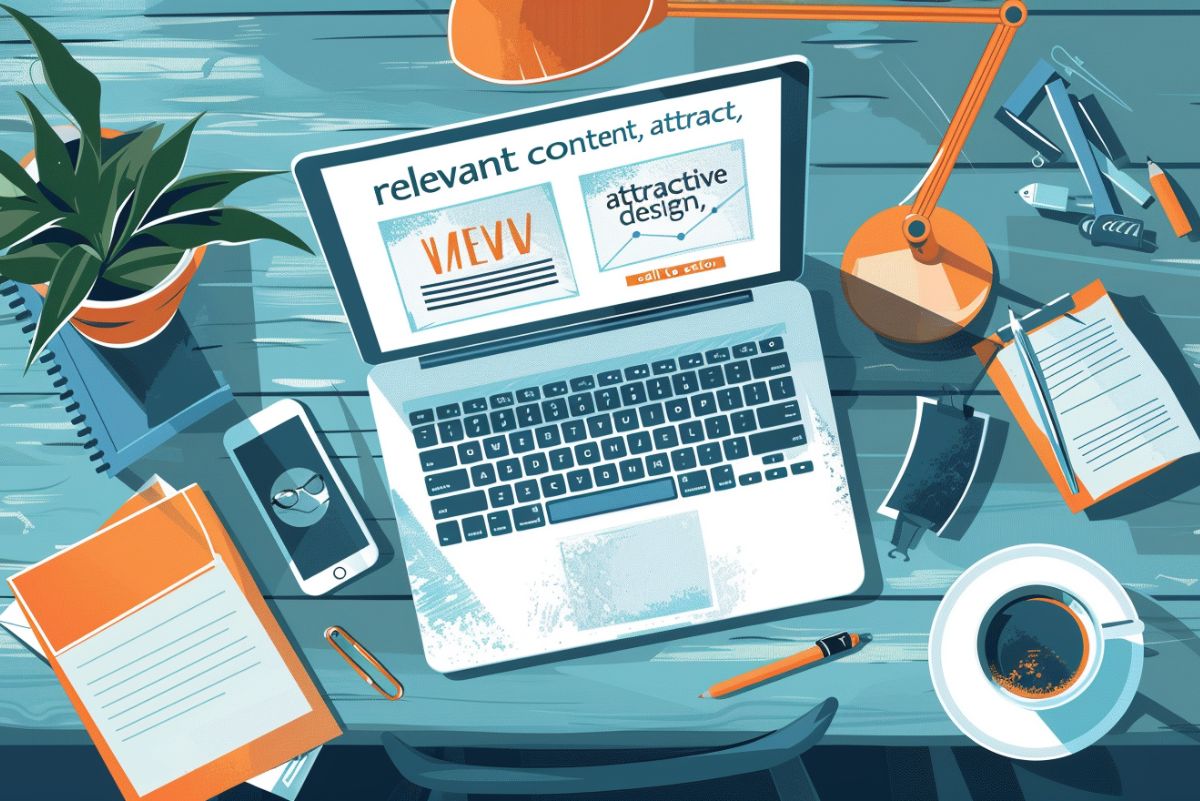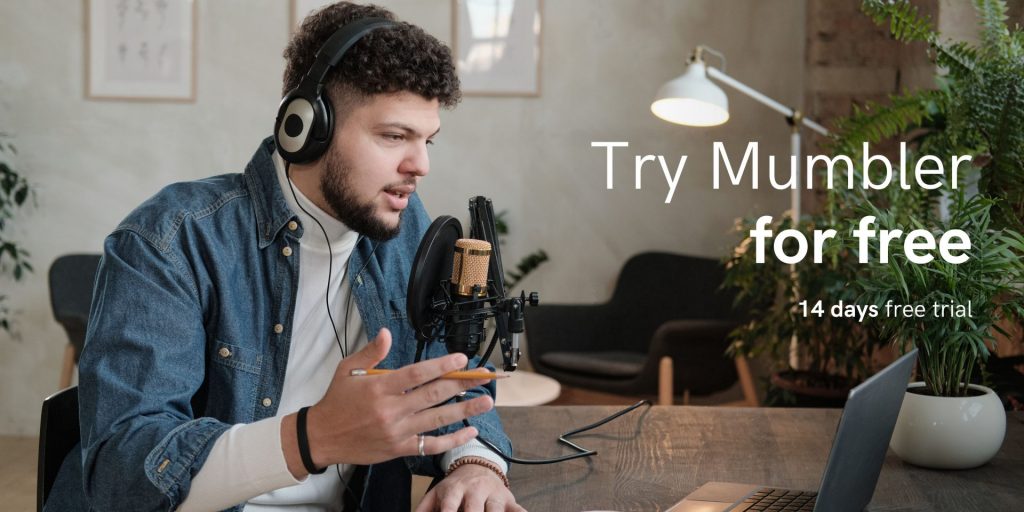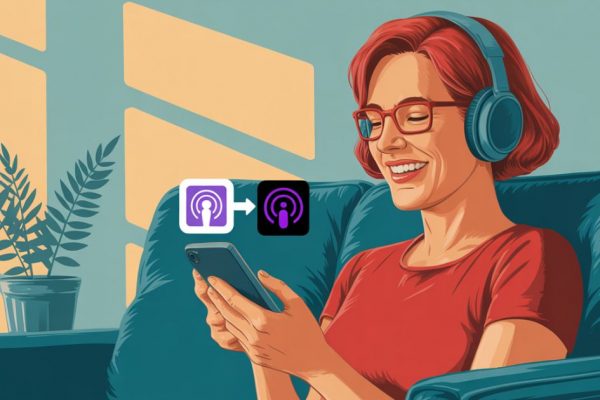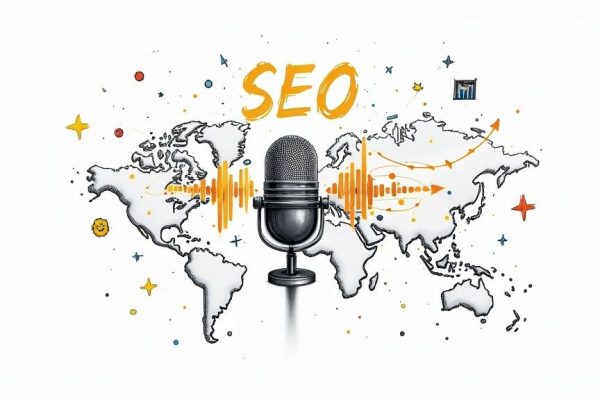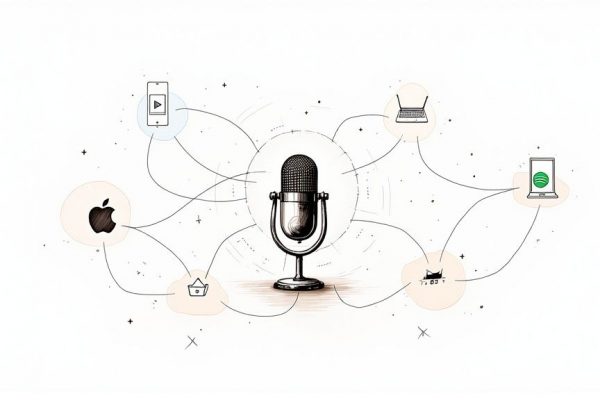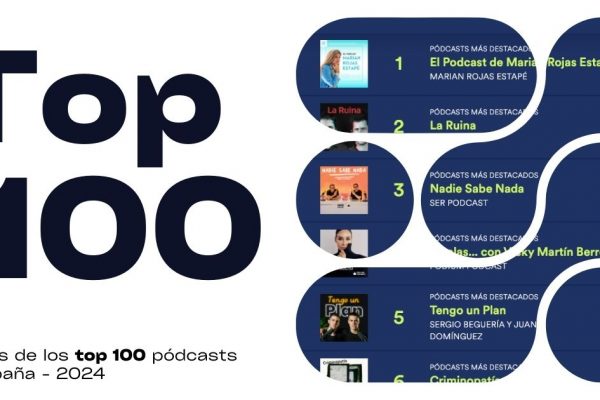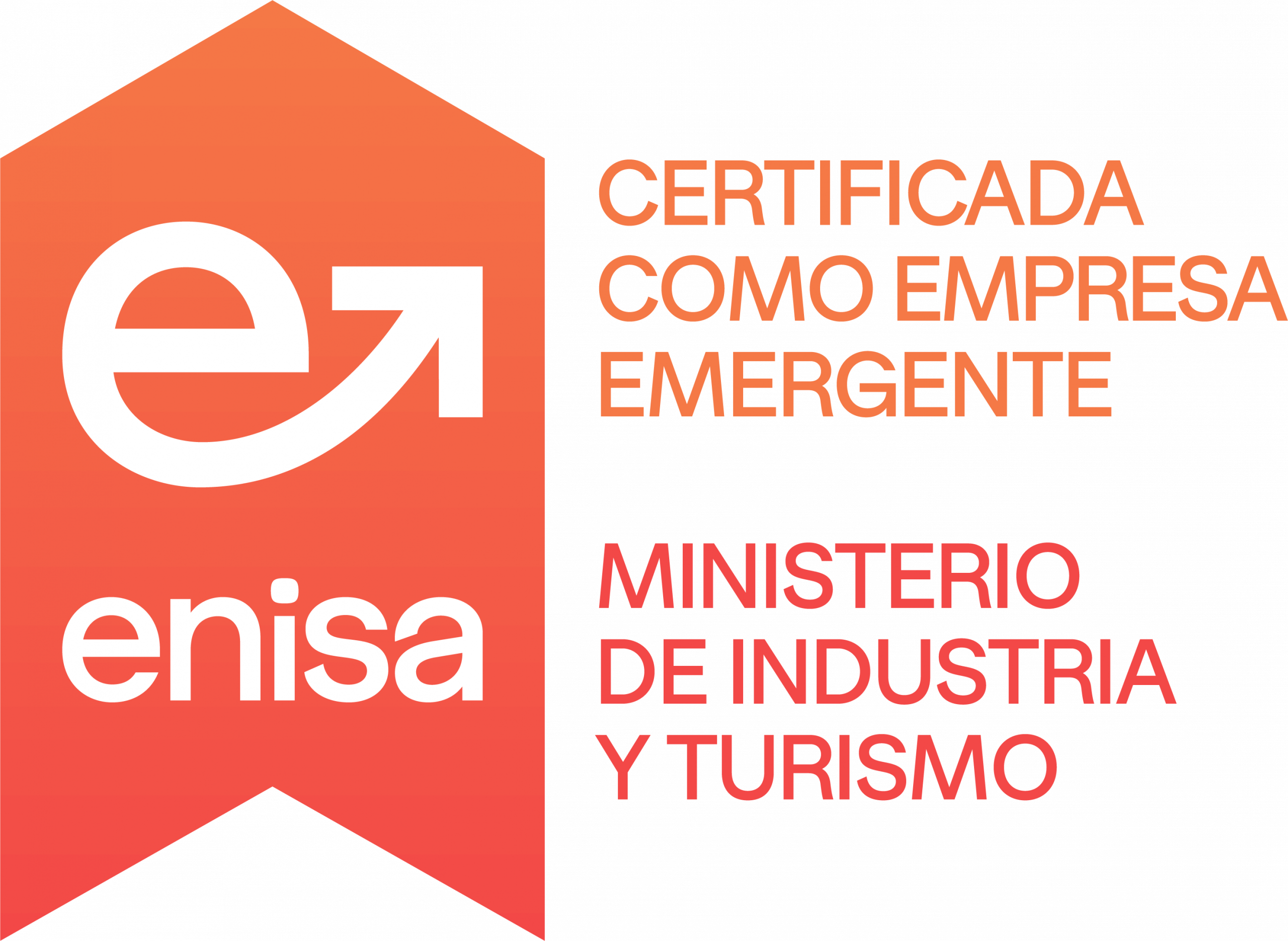If you want to create a good newsletter that people want to read, you'll need to follow these guidelines:
- Clarify your goals and adjust content and design accordingly.
- Create relevant and captivating content to maintain subscribers' interest.
- Design your newsletter with an attractive style.
- Use effective writing techniques.
- Personalize your content and segment your audience.
- Determine the optimal frequency and timing for sending.
- Conclude with a call to action.
And nothing you haven't read in one of those many tweets promising to change your life.
However, even though everything seems so simple, the truth is that applying these techniques to our own content and getting favorable results is much more complex. To bring it down to earth and review the actions of this strategy, we'll pause for a few moments on the points we consider most relevant.
Do you want your emails to make a good impression? Then you know what you have to do: Keep reading.
Define your purposes and objectives
The creation of a newsletter begins by clarifying objectives and purpose. These aspects are fundamental and act as pillars that guide both the content and design of your newsletter.
Clarification of the newsletter's objectives
It is crucial to establish clear and specific objectives for your newsletter from the beginning. What do you hope to achieve with it? Are you looking to increase subscriber engagement, boost sales, share relevant news, or promote events?
Some common objectives could include:
- Encouraging subscriber engagement and interaction.
- Generating leads and converting them into potential customers.
- Establishing your brand as a leader in your industry or niche.
- Informing your subscribers about updates, product launches, or events.
- Increasing traffic to your website or online store.
Once you have clear objectives, you can design specific strategies to achieve them and effectively measure their success.
How does the purpose influence content and design?
The purpose of your newsletter not only determines what type of content you will send, but also how it will be presented. For example, if your goal is to inform your subscribers about the latest developments in your industry, you probably want to include relevant news, product updates, or links to interesting articles.
On the other hand, if your goal is to promote sales or generate leads, you may prefer to include special offers, discount coupons, or clear and direct calls to action.
In terms of design, the purpose of your newsletter will also influence the aesthetics and layout of the content. For example, if you want to convey a professional and reliable image, you will likely opt for a clean and minimalist design. Conversely, if your goal is to highlight your brand's creativity and innovation, you may prefer a bolder and more colorful design.
Defining the purpose and objectives of your newsletter is the first essential step in creating relevant and engaging content that resonates with your audience and brings you closer to your business goals.

Creation of engaging content
Creating compelling content is essential to maintain the interest and engagement of your subscribers in your newsletter. Here we will explore strategies to generate relevant and captivating topics, as well as the importance of originality and authenticity in content.
Strategies for generating relevant and captivating topics
One of the keys to creating engaging content is to ensure that it is relevant to your audience. Here are some strategies you can follow:
- Market research: Conduct research to understand the needs, interests, and challenges of your target audience. Utilize tools such as surveys, data analysis, and customer feedback to identify the topics that interest them the most.
- Trend tracking: Stay updated on relevant trends and events in your industry or niche. Incorporate current and novel topics into your content to keep it fresh and relevant.
- Active listening: Pay attention to conversations on social media, forums, and online communities related to your business area. Identify topics that generate the most interaction and consider addressing them in your newsletter.
- Analyze past performance: Evaluate the performance of your previous newsletters to identify the topics that generated the most interest and engagement among your subscribers. Use this information to guide your decisions for future content.
Importance of originality and authenticity in content
In addition to being relevant, your content must also be original and authentic to stand out among the crowd and resonate with your audience. Here are some reasons why originality and authenticity are key:
- Differentiation: Originality helps you differentiate yourself from the competition and stand out in the minds of your subscribers. Provide a unique perspective or an innovative approach to the topics you address in your newsletter.
- Emotional connection: Authenticity allows you to establish a deeper emotional connection with your subscribers. Sharing personal stories, genuine experiences, and sincere opinions can help build trust and loyalty towards your brand.
- Engagement: Original and authentic content tends to generate higher engagement from the audience. Subscribers appreciate authenticity and are more inclined to interact, share, and respond to your content when they perceive it as genuine and relevant to them.
When creating content for your newsletter, make sure it is relevant, original, and authentic. This will help you maintain the interest and participation of your subscribers, as well as strengthen the connection between your brand and your audience.
Design and visual presentation
Design and visual presentation are fundamental aspects of an attractive and effective newsletter. Here we will explore tips for attractive and professional design, as well as the use of images, graphics, and typography to improve readability.
Tips for attractive and professional design
A well-crafted design can make your newsletter stand out and capture the attention of your subscribers at first glance. Here are some tips for attractive and professional design:
- Simplicity: Maintain a clean and minimalist design to avoid overwhelming your subscribers with too much information. Use white space to separate elements and enhance readability.
- Consistency: Keep consistency in the design of your newsletter to reinforce your brand identity and ease navigation. Utilize a consistent color palette, legible fonts, and a visual style that reflects your brand's personality.
- Visual Hierarchy: Organize your newsletter content hierarchically to highlight the most important and relevant elements. Use headings, subheadings, bold text, and bullet points to guide your subscribers through the content and emphasize key information.
- Mobile optimization: Ensure that your newsletter is optimized for viewing on mobile devices, as more and more people access email from their smartphones and tablets. Use a responsive design that adapts to the user's device screen size.
Use of images, graphics, and typography to improve readability
Images, graphics, and typography play a crucial role in the readability and visual appeal of your newsletter. Here are some ways to use them effectively:
- Relevant images and graphics: Use high-quality images and graphics that are relevant to the content of your newsletter. Eye-catching visuals can grab the attention of your subscribers and help convey your message more effectively.
- Balance between text and images: Find a proper balance between text and images in your newsletter to avoid overwhelming your subscribers with too much information. Use images to complement and highlight the written content, rather than overshadowing it.
- Typography selection: Choose a legible and appropriate typography for your newsletter. Avoid using overly elaborate or difficult-to-read fonts, especially in small sizes. Use different font sizes and styles to prioritize information and improve readability.
Well-thought-out design and attractive presentation can enhance the effectiveness of your newsletter.

Effective writing and writing style
Effective writing and the appropriate writing style are key elements in maintaining your subscribers' interest and conveying your message clearly and persuasively. In this section, we'll explore writing techniques to capture and hold attention, as well as the suitable writing style and tone for your audience.
Writing techniques to capture and maintain attention
Effective writing starts with the ability to capture your subscribers attention from the beginning and maintain it throughout your newsletter. Here are some techniques you can use to achieve this:
- Catchy headlines: Use clear, concise, and attractive headlines that capture the attention of your subscribers and entice them to read more. Headlines should be informative, intriguing, and relevant to the content that follows.
- IPersuasive introduction: Engage your subscribers from the outset with a persuasive introduction that sets the tone and theme of your newsletter. Use anecdotes, provocative questions, or impactful statistics to grab their interest from the start.
- Clear and organized structure: Organize your content in a clear and logical manner. Use short paragraphs, bullet points, and subheadings to facilitate reading and comprehension. Keep the language simple and direct to avoid unnecessary jargon or complicated technical terms.
- Clear calls to action: Include clear and specific calls to action to guide your subscribers toward the next step you want them to take. Use action verbs and imperative phrases to enhance the persuasion and effectiveness of your calls to action.
Writing style and appropriate tone for your audience
The writing style and tone of your newsletter should align with the personality of your brand and the expectations of your audience. Here are some important considerations to keep in mind:
- Know Your Audience: Research thoroughly and deeply understand your audience to tailor your writing style and tone to their preferences and demographic characteristics. Take into account their age, interests, educational level, and other relevant factors.
- Maintain consistency: Keep a consistent tone and writing style throughout your newsletter and in all your brand communications. This helps reinforce your brand identity and build a strong and coherent relationship with your subscribers.
- Be authentic: Show authenticity and transparency in your writing. Use genuine and sincere language that resonates with your subscribers. Avoid promotional or artificial tones, and instead, communicate with your subscribers in an honest and direct manner.
- Adapt the tone according to the context: Adjust your tone and writing style based on the content and purpose of your newsletter. For example, you can adopt a more informal and conversational tone in entertainment or news content, and a more professional and authoritative tone in informative or promotional content.
Effective writing and the appropriate writing style are essential elements to create a newsletter that captures your subscribers' attention and keeps them engaged. Use these techniques and considerations to improve the quality and effectiveness of your written content.
Personalization and segmentation
Personalization and segmentation are powerful strategies to enhance the relevance and effectiveness of your newsletters. In this section, we will explore how to customize content for different audience segments and how to use data and feedback to adapt your newsletters effectively.
Personalization of content for different audience segments
Content personalization allows you to tailor your newsletter to the specific preferences, interests, and behaviors of different segments of your audience. Here are some strategies for personalizing the content of your newsletter:
- Demographic segmentation: If possible (and relevant), divide your audience into segments based on demographic characteristics such as age, gender, geographic location, and level of education. Then, customize the content of your newsletter for each segment based on their specific characteristics.
- Interest-based segmentation: Use user behavior data and declared preferences to segment your audience based on their interests and activities. Then, tailor the content of your newsletter for each segment based on the topics that interest them the most.
- Customer lifecycle segmentation: Divide your audience into segments based on their stage in the customer lifecycle, such as prospects, potential customers, and existing customers. Then, customize the content of your newsletter for each segment based on their specific needs and expectations at each stage of the customer lifecycle.
Using data and feedback to adapt newsletters
Collecting and analyzing data, as well as subscriber feedback, are essential for adapting and improving your newsletters. Here are some ways to use data and feedback to adapt your newsletters effectively:
- Performance metrics analysis: Track key metrics such as open rate, click-through rate, and conversion rate to evaluate the performance of your newsletters. Use this data to identify patterns and trends, and adjust your content strategy and segmentation accordingly.
- Surveys and questionnaires: Gather direct feedback from your subscribers through surveys and questionnaires to better understand their needs, preferences, and expectations. Use this information to personalize the content of your newsletter and enhance the user experience.
- A/B testing: Conduct A/B tests with different versions of your newsletter to determine which content elements, design, and segmentation yield better results. Use the insights gained from these tests to optimize your newsletters and maximize their effectiveness.
Personalization and segmentation are key strategies to improve the relevance and effectiveness of your newsletters. Use data, feedback, and advanced segmentation techniques to tailor the content of your newsletter to the specific needs and preferences of your audience.
Frequency and timing of delivery
Determining the frequency and the right timing to send out your newsletters is crucial to maximize their effectiveness and minimize subscriber fatigue. In this section, we will explore how to determine the optimal sending frequency and best practices for choosing the timing of delivery.
Determining the optimal frequency of delivery
The frequency of sending out your newsletters should balance the need to keep your subscribers engaged and informed with the need to avoid saturation and disinterest. Here are some considerations for determining the optimal frequency of delivery:
- Listen to your audience: Observe the behavior and responses of your subscribers to identify their tolerance and preferences regarding the frequency of receiving your newsletters. Pay attention to engagement metrics and adjust your sending frequency accordingly.
- Evaluate the available content: Make sure you have enough valuable and relevant content to justify the sending frequency you choose. Avoid sending newsletters with repetitive or uninteresting content just to meet a certain frequency.
- Test and adjust: Experiment with different sending frequencies and evaluate their impact on engagement and unsubscribe rates of your newsletters. Conduct A/B tests to compare the performance of different frequencies and adjust your strategy based on the results obtained.
Best practices for choosing the timing of delivery
In addition to frequency, the timing of when you send out your newsletters can also have a significant impact on their effectiveness. Here are some best practices for choosing the appropriate timing of delivery:
- Know Your AudienceConsider the behavior and habits of your subscribers to determine the best time to send your newsletters. Take into account factors such as geographical location, time zone, and daily routines of your audience.
- Avoid busy times: Refrain from sending your newsletters during times when your subscribers are busy or distracted, such as during peak working hours or weekends. Instead, choose times when your subscribers are more likely to be receptive and available to interact with your content.
- Use scheduling tools: Utilize email scheduling tools to send your newsletters at the optimal time. Schedule your newsletters to be sent based on the hour and day you have identified as most effective for your audience.
Determining the appropriate frequency and timing for sending out your newsletters is essential to maximize their effectiveness and keep your subscribers engaged. Use these best practices and considerations to adjust your delivery strategy and improve the results of your newsletters.

Are you ready to send out a good newsletter that people will want to read?
It's time to tell the truth: all of this is relative.
While we've covered a series of tips and best practices for creating an effective newsletter that people want to read , the best thing you can do next is to start experimenting..
Don't stick to a single format and stay alert to your audience's feedback. Try, have fun, and surprise your subscribers with new things to see their reaction and adjust the tone of your next email.
It's crucial to remember that a successful newsletter is not just about sending emails but about creating meaningful connections with your audience. Personalization, relevance, and authenticity are key elements to keep your subscribers engaged and turn them into loyal customers.
Now is the time to put what you've learned into practice.
Review your current strategy and apply some of the tips from this article. Consider how you can personalize your content, improve your visual design, adjust your frequency of sending, and refine your writing style to meet the needs and preferences of your audience.
Do not underestimate the power of a well-executed newsletter. With the right approach and dedication to continuous improvement, you can transform your newsletters into powerful tools to promote your brand, increase subscriber engagement, and achieve your business goals.
Don't wait any longer! Start implementing these strategies today and see how your newsletter becomes an invaluable tool for your business.
About the author
Content Manager at Mumbler.
Podcaster and content creator.
Passionate about communication and a fan of the WordPress community.
I talk about movies and series on Babel Infinito.
I talk about podcasting on Todo por Un Podcast.
